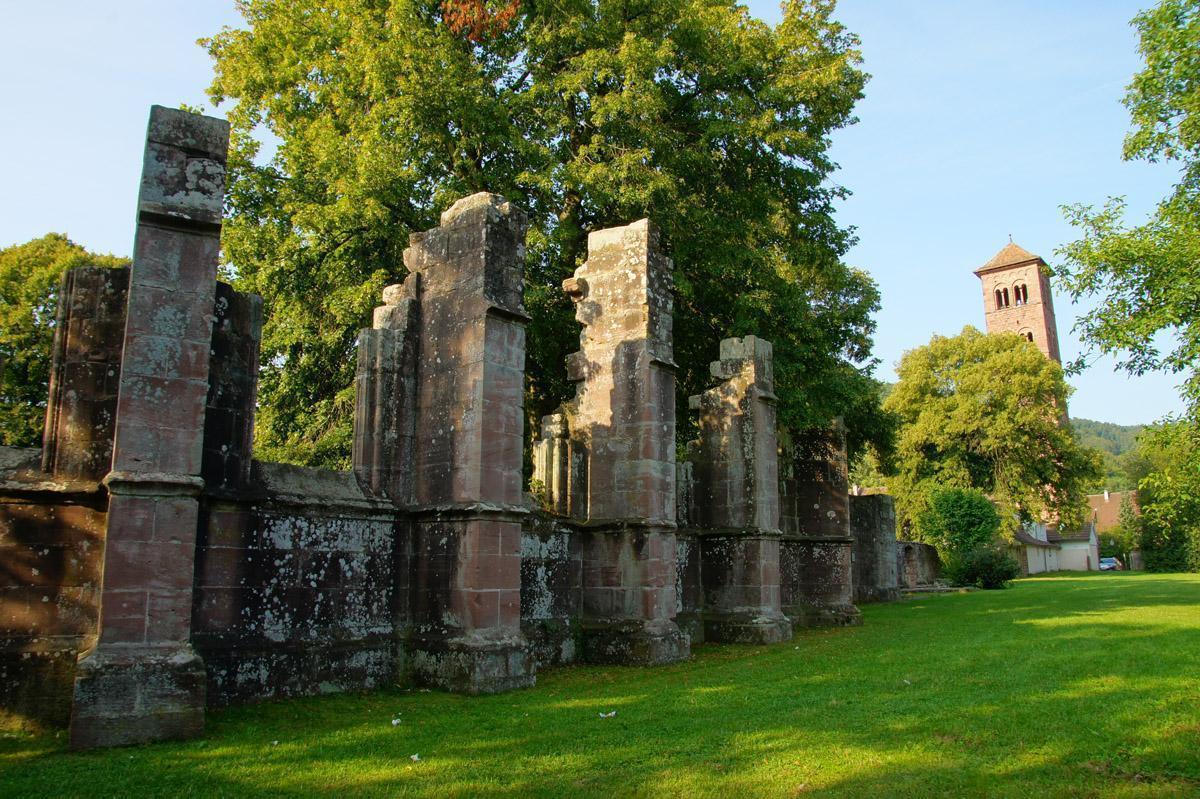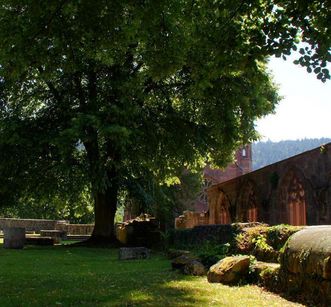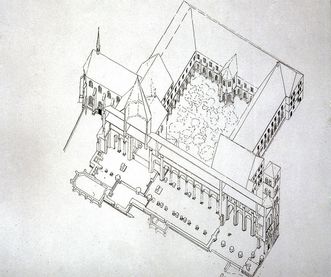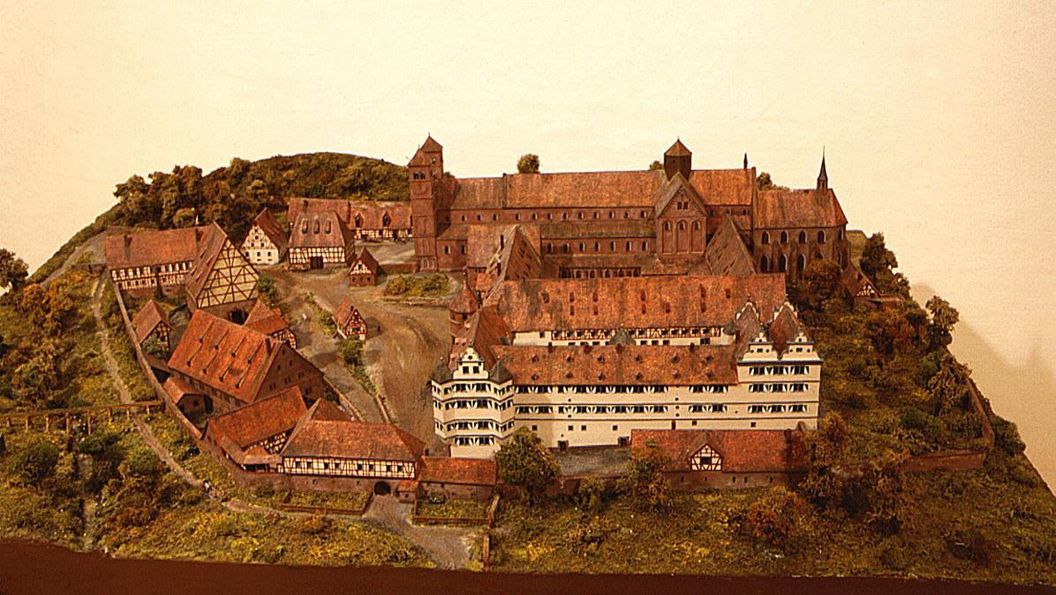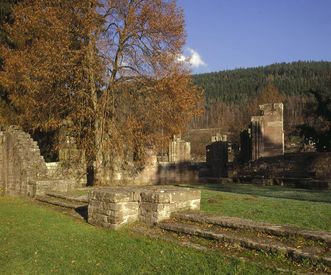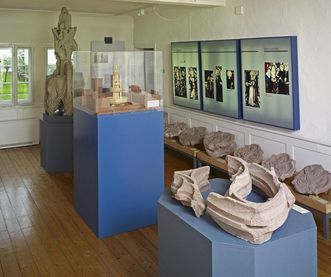CONSECRATED AND LATER DESTROYED
Construction on the monastery church of St. Peter and Paul began in 1082 under Abbot Wilhelm von Hirsau. It was consecrated only nine years later. It is unlikely that the entire building had been completed at that time, since the monastery continued to expand until the mid-12th century. The church was severely damaged in the Nine Years' War and later served as a quarry. Its original appearance has been determined by various archaeological studies.



